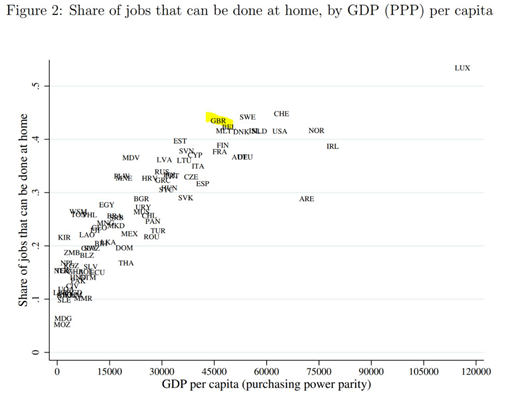The UK Government’s attempts to signal the path of the pandemic with tier systems and furlough deadlines have repeatedly fallen short as the disease has overtaken them. In response, HR professionals and senior leaders have had to acquire domain knowledge on virology and epidemiology to plan ahead and secure workplaces. In this blog, we ask when it might be safe to go back to work, considering the factors facing the UK such as the demography of our workforce, estimated pace of vaccine delivery, and ability to work from home.
The short answer to when it is safe is when there is no longer community transmission of COVID-19. Some countries have achieved this before vaccination – in island nations like New Zealand, but also in Wuhan where the virus originated. The UK’s response is to roll out the vaccine as soon as possible and to reduce transmission through lockdowns/tiers in the meantime. The pace of vaccination to date has been encouraging.
Who are the most vulnerable?
Age is by far the biggest risk factor of COVID-19 and by starting with the most vulnerable, we should start to see results soon in terms of falling mortality. However, there are still some unknowns. Although it seems likely it is not yet known for sure whether vaccinated people will still be able to spread the virus. If COVID-19 remains prevalent within the community, then those unvaccinated will remain at risk – albeit a greatly reduced risk than the most vulnerable priority groups. One concern of the new and increasingly dominant strain is just how contagious it is, which may make it difficult to reduce the R number even within lockdown. Early evidence does however suggest that lockdown is working.
Our vaccine priority groups have big implications for the workforce. Key COVID-19 risk factors such as age and disability are associated with low rates of employment. There is therefore little overlap between those most likely to be vaccinated first and the working population. We, therefore, need to think very carefully about when we go back to work. At present the Government expects most adults in the UK to be offered the vaccination by September.
Other countries approaches
Interestingly in some countries, notably Indonesia, they are vaccinating the working population first, the logic being that they are the most mobile. Time will tell whether this strategy is successful. In the UK the vaccine priority groups have been broadly accepted as the most appropriate approach.

Of course, some people have no choice but to go back to work and have been working throughout the pandemic. By working from home for those of us who can, we are all helping to reduce community transmission, and with our service-based economy, a larger proportion of jobs in the UK can be done from home relative to other countries. Research from the University of Chicago broke down jobs into the tasks and to quantify how many jobs can be done from home. About 45% in the UK.

What happens now?
The political pressure to re-open will be intense. How do we know this? Because it happened once before. The Government launched an ill-fated PR campaign to get everyone back into the office (or risk losing your job), only to reverse this policy three weeks later.
When the offices last reopened, we came up with three key tests which are worth revisiting.
- Is it essential?
- Is it sufficiently safe?
- Is it mutually agreed?
Many of us are a few short weeks away from entering our second year of homeworking. The technology has been invested in and the ways of working adjusted. When will it be safe to go back? A little longer yet.
Topics A-Z
Browse our A–Z catalogue of information, guidance and resources covering all aspects of people practice.
Bullying
and harassment
Discover our practice guidance and recommendations to tackle bullying and harassment in the workplace.
About the author

Jon Boys, Labour Market Economist
Jon joined the CIPD in January 2019 as an Economist. He is an experienced labour market analyst with expertise in pay and conditions, education and skills, and productivity.
Jon primarily uses quantitative techniques to uncover insights in labour market data, both publicly available and generated through in house surveying. Jon regularly contributes commentary and analysis of economic issues on the world of work to online, print and TV media. Recent work includes the creation of an international ranking of work quality, analysis of firm level gender pay gap reporting data, and an ongoing programme of work looking at the changing age profile of the UK workforce.
Review the papers and submissions from the 2023 conference

Research suggests furlough schemes protected men’s mental health better than women’s

Will the leadership lessons learnt help with new challenges?

Peter Cheese, the CIPD's chief executive, looks at the challenges and opportunities faced by today’s business leaders and the strategic priorities needed to drive future success

We outline the key pieces of legislation set to come into force in the UK and explain their implications for employers and employees

We examine people’s desired hours and how this compares to the hours they actually work

Employers’ reactions to pension proposal highlight concerns over cost, while the CIPD calls for focus on raising pension awareness among staff, the need for higher contributions and better understanding of value for money
